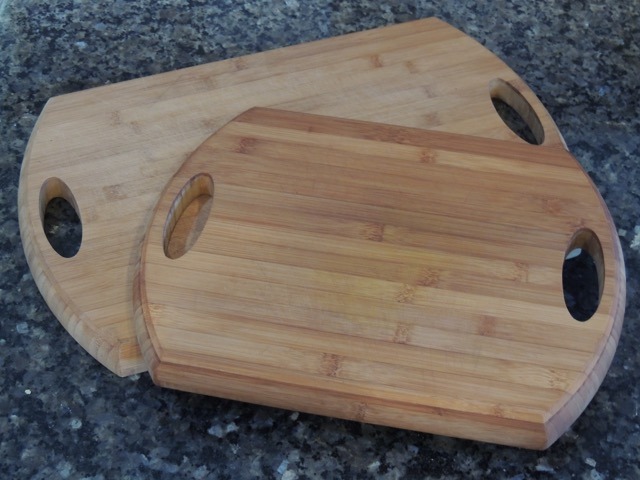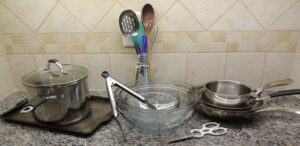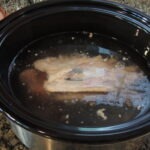We recommend 2 cutting boards:
- Cutting board for vegetables
- Cutting board for raw meats

In a pinch, we have used one side of our wooden cutting board for vegetables and then the other side for meats. If you need to do this on occasion, mark which side is which and be sure to cut all of your vegetables first, then flip it over to cut the meat. Wash and disinfect it afterward. This is not ideal, but we’ve done it when necessary.
Choosing a good cutting board is very important if you want to protect your knives. Keep in mind:
- Never cut food on your counter top! If it’s made out of a soft material like Formica, the knife will cut into the counter causing damage and creating an environment for bacteria to grow. If it’s made from a hard material like granite, tile or even Corian, it will dull your knife quickly. Also, your counter might not be the cleanest surface!
- Never use a glass cutting board, even if it’s pretty!
- Although soft boards made from plastic or silicone protect your knives, you will create small cuts that can be unattractive and trap bacteria. In fact, studies have also shown that bacteria remains on plastic cutting boards much longer than wooden ones. That’s why we steer clear of plastic. Silicone is purported to be more bacteria resistant and these “boards” or sheets are very affordable. Greg likes his set of 4 thin silicone cutting sheets that are flexible, lightweight and easy to store. (He hangs them on a hook on his kitchen wall.) They’re also color coded to show what type of food to cut on each one, which avoids cross-contamination. They might be a good option for you, as long as you don’t mind replacing them every few years, depending on how much you use them.
- You can now find some composite wood cutting boards which are extremely durable and dishwasher safe. However, they’re hard on knives and not cheap, so we don’t recommend them.
- Wooden boards like Rebecca and Bobbi use are made from numerous types of wood and tend to be more expensive, making these a great item to ask for as a gift! Bamboo boards are popular now and can be found at good prices if you look around. They’re environmentally friendly and made from sustainable wood, which is a plus. However, bamboo is a hard woods and therefore harder on knives. Another issue to consider is the glue used to manufacture bamboo boards. Many glues contain formaldehyde, so look for a certification that the glue is non-toxic. Maple is considered the premier type of wood for a cutting board, both beautiful and gentle on your knives. A maple cutting board is an investment, but worth it, especially if you own expensive knives. Wooden boards should be washed by hand and never soaked in water. They also need to be oiled regularly. (We like Block Brothers Block Oil, a natural product design specifically for cutting boards.)
In short, we recommend either 2 nice wooden cutting boards that will last just about forever if taken of properly, or a set of inexpensive silicone cutting sheets that will be replaced every few years.

